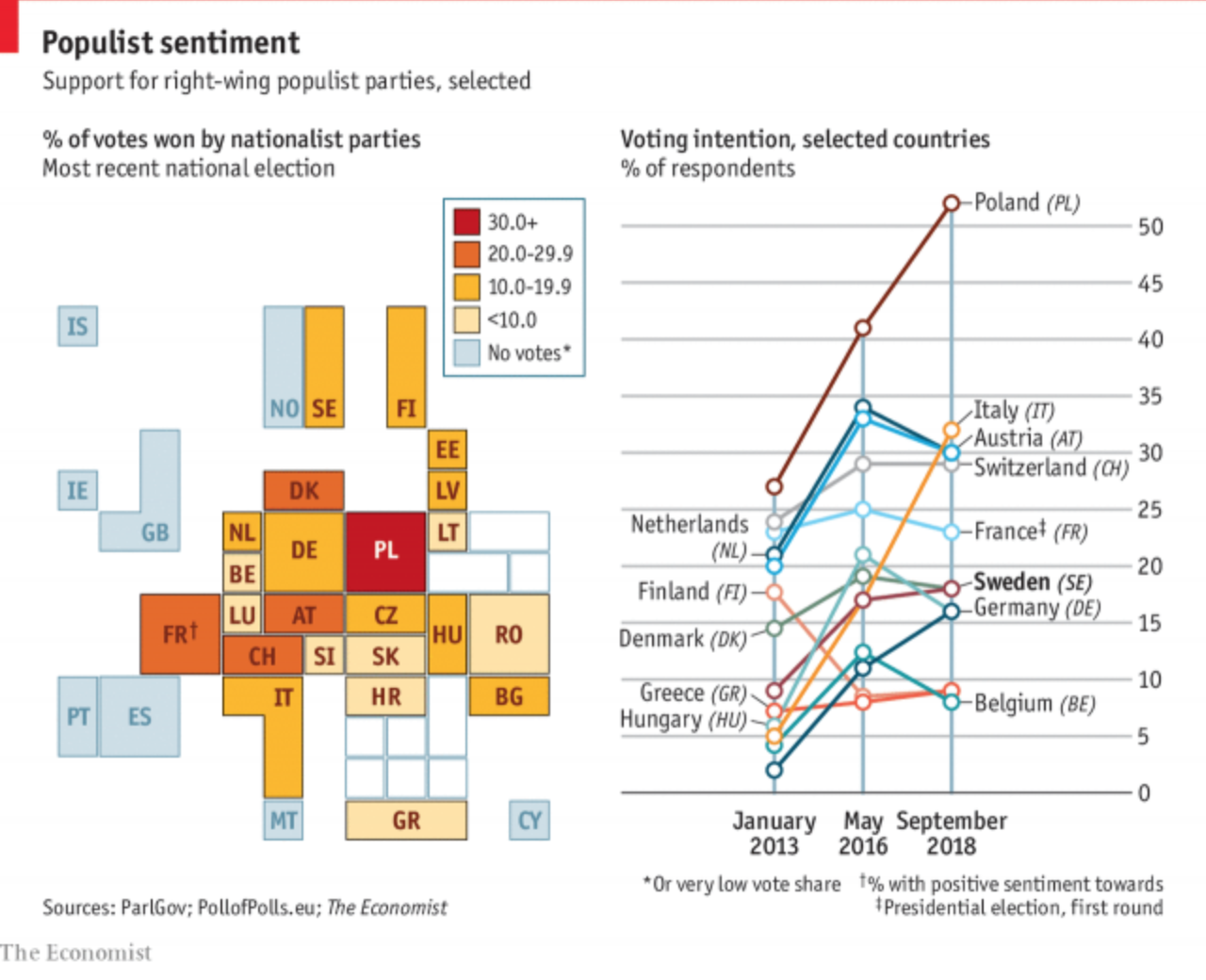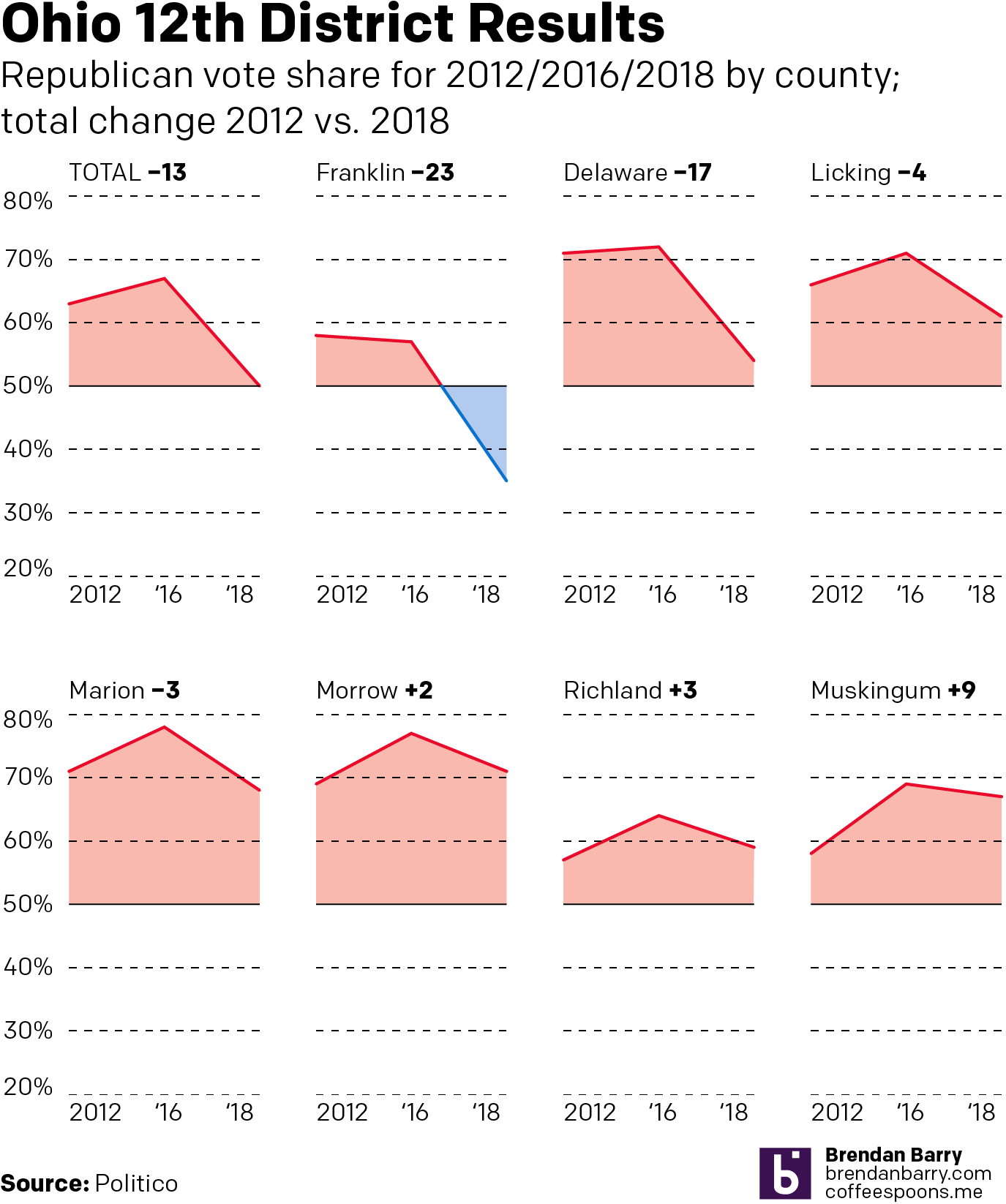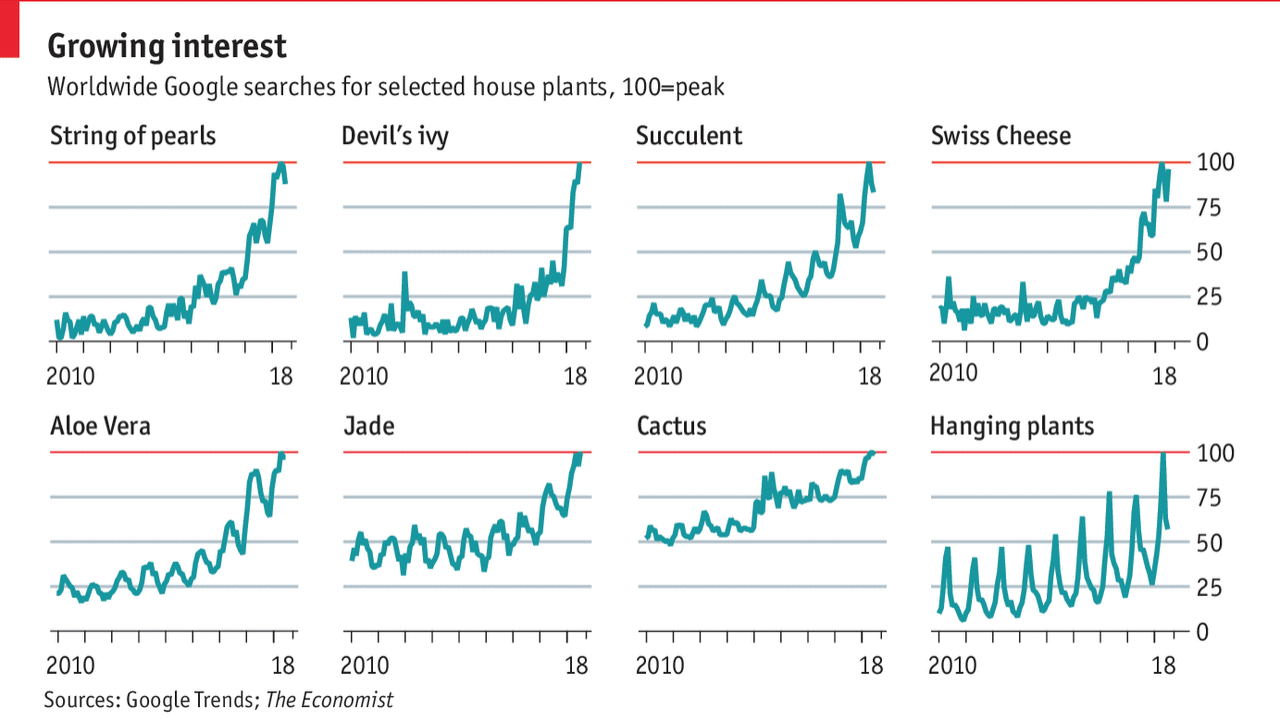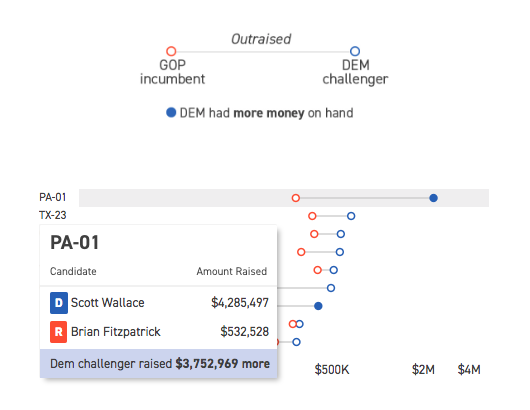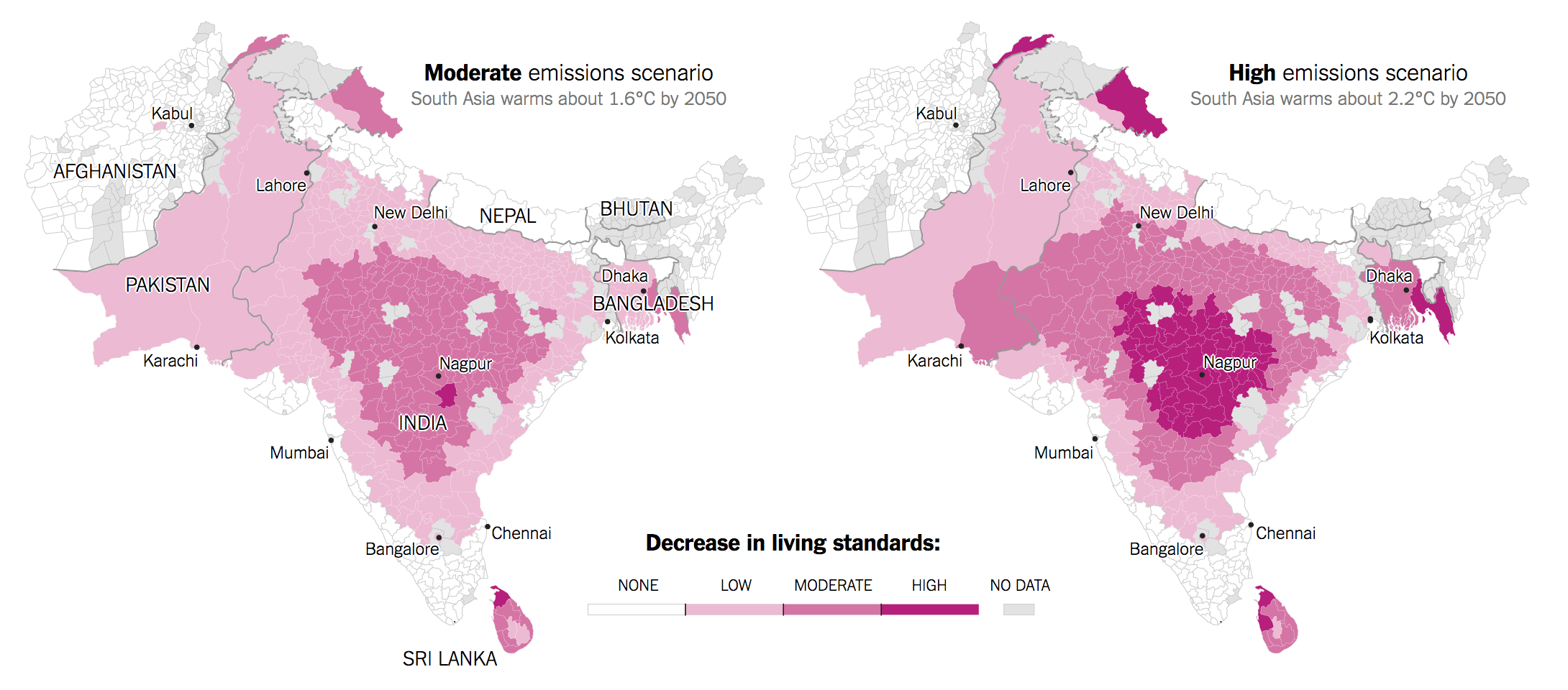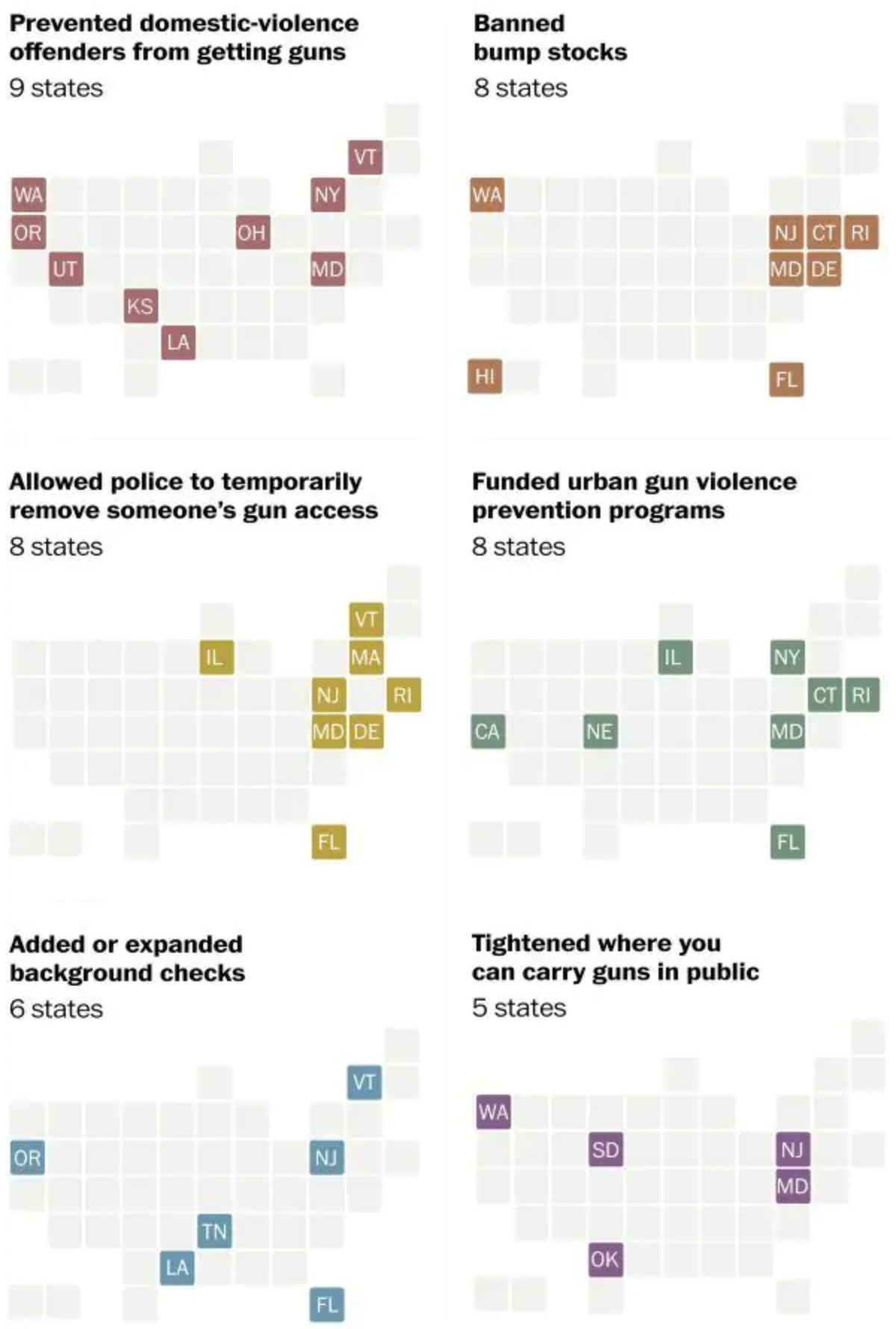One year on and the #meToo movement continues to upend the political, economic, and cultural landscape of the United States. And a few days ago the New York Times published a piece on all the stories they have collected.
From a data visualisation standpoint, this is a fairly simple piece. It takes 201 men (and a few women) who allegedly committed crimes along with their photo (if available) and then shows who replaced them. The screenshot below is of the total number of faces—notably not all men have been replaced—and then divides those who replaced them by gender.
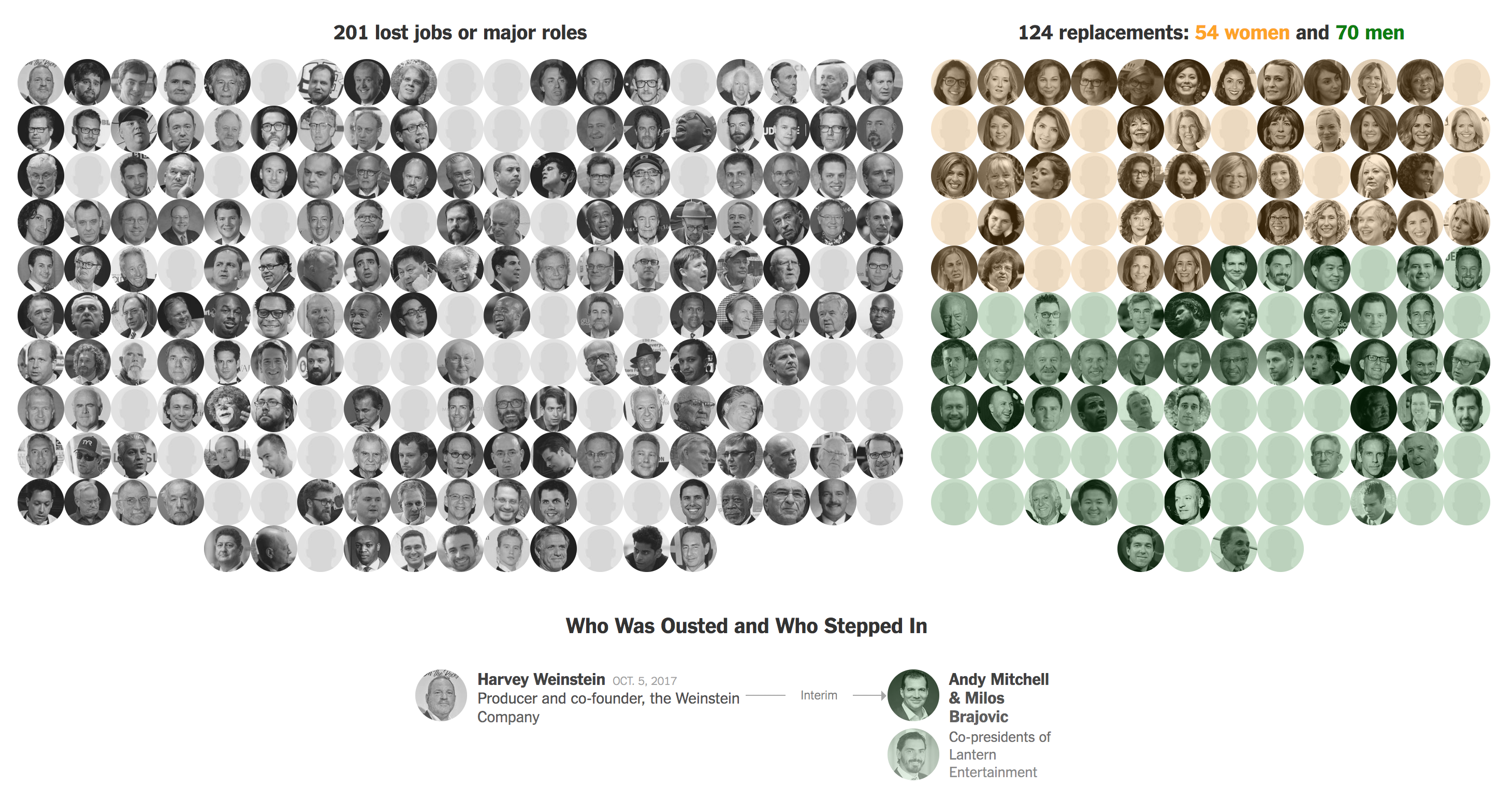
The bit at the bottom shows how the case studies work. A man is on the left and who replaced him is on the right, both in the interim and more permanently, if applicable. A brief text account of the story falls below the alleged offender. And with 200+ stories, you can scroll for days.
Credit for the piece goes to Audrey Carlsen, Maya Salam, Claire Cain Miller, Denise Lu, Ash Ngu, Jugal K. Patel, and Zach Wichter.



